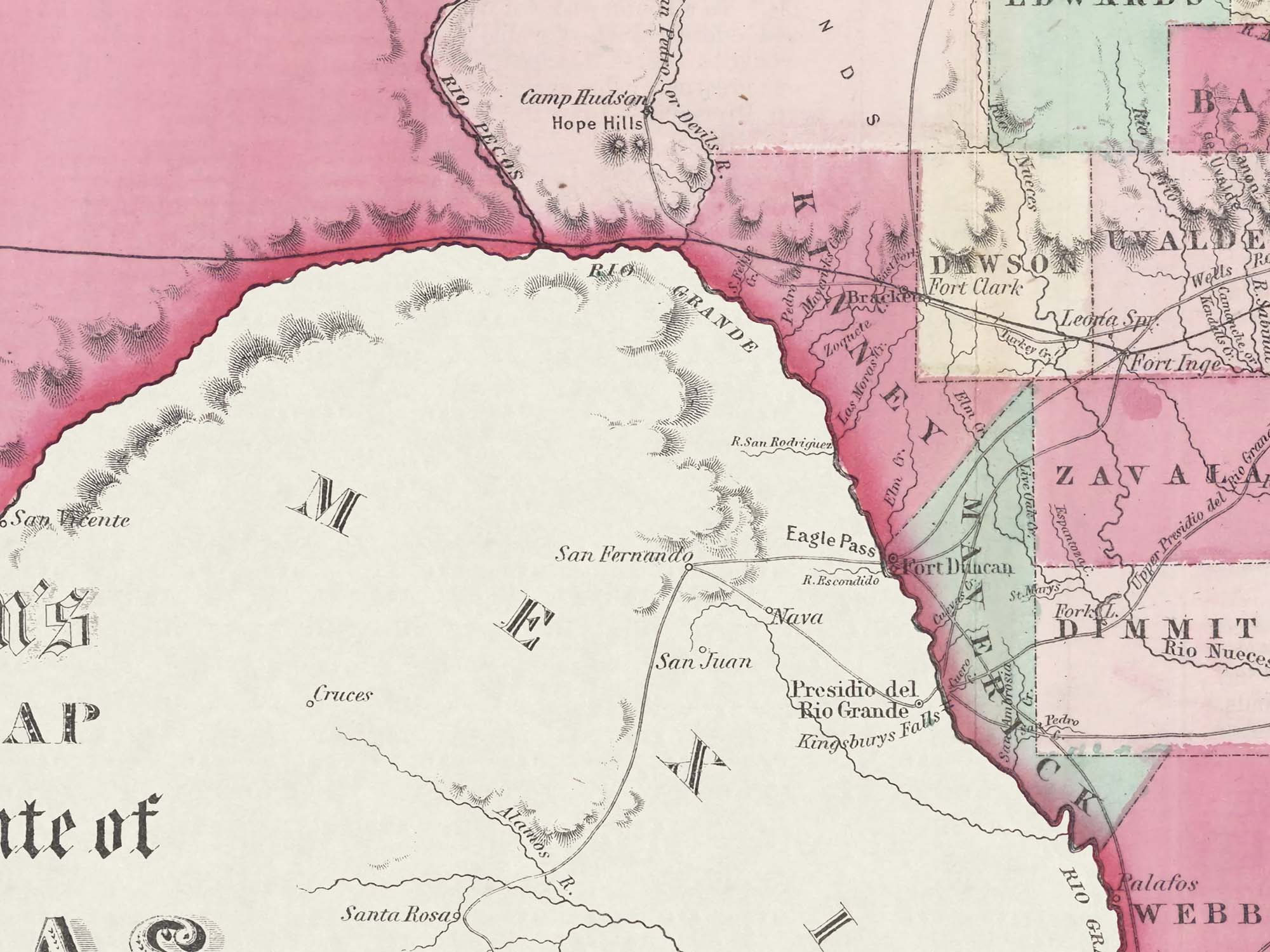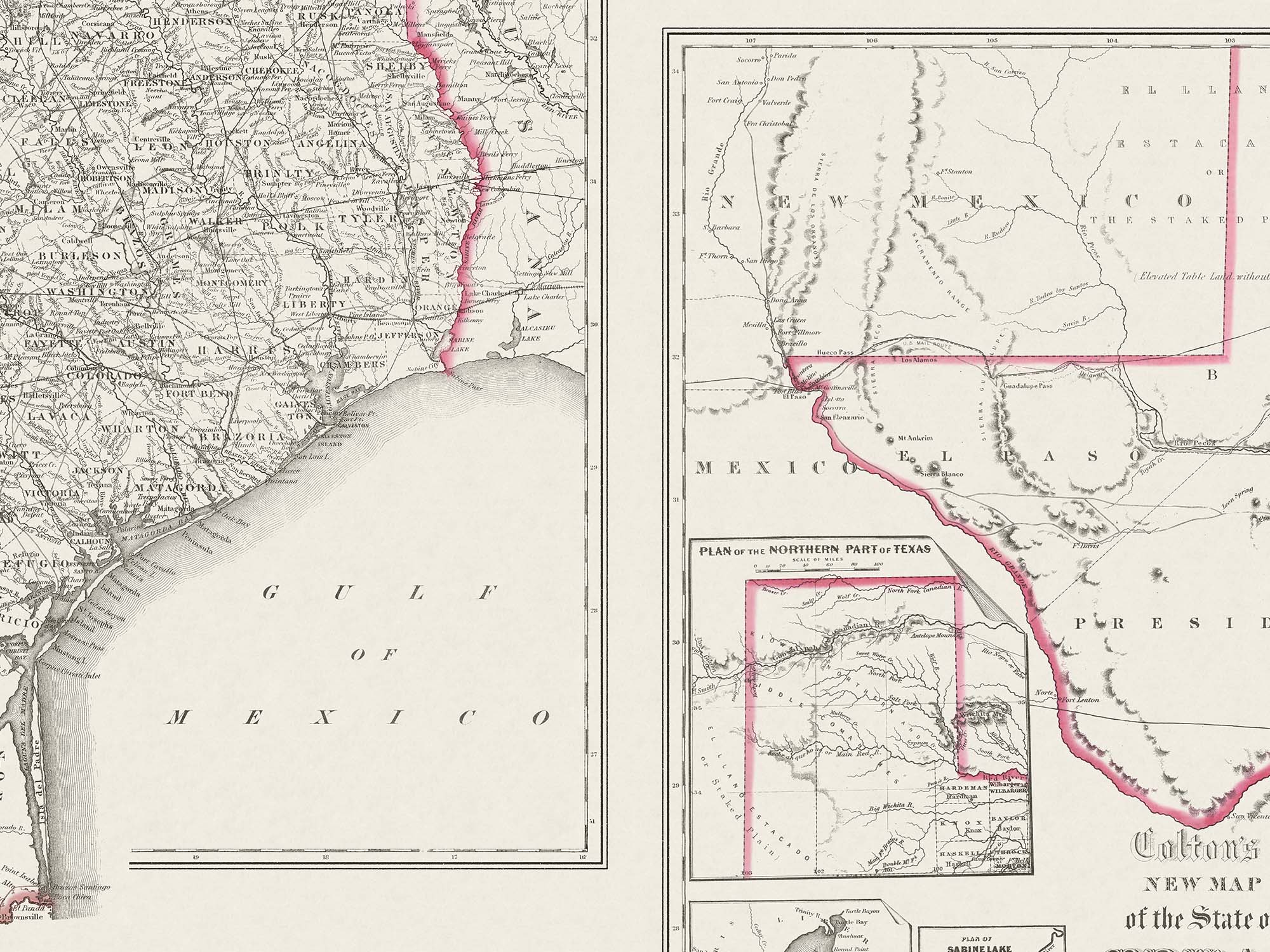This map is a faithful reproduction of the original 1850 map restored to its former glory using the latest digital imaging technology.
Historic Texas Map
Standard maps will enter production right away, within the next business day. Larger orders may take more time.
All push pin board maps (framed or canvas wrap) include push pins, are easy to hang, and ship free in the continental US. We'll select the optimal shipping method for fast delivery.
For personalized maps we collaborate closely to guarantee satisfaction. Expect a proof to be sent to you. Your swift responses will facilitate the production and shipping process.
If there are any problems with your map we will take care of you. Returns for all maps are straightforward and hassle-free.
For personalized maps, engaging with the email proofs we send ensures that the final product meets your expectations precisely.
We have 30+ years of cartography experience, meticulously craft each order by hand to ensure excellence, and 100% guarantee your satisfaction. We produce maps that are built to last, with state of the art production and archival quality materials.
Customize with quotes, legends, or dedications using "Personalize Map" options to craft your masterpiece map. Or reach out to us if you don't see the option you want.
We collaborate with you from design to approval of your proof so that you are 100% happy before we print and ship.
Our excellent customer service is always open to you.
Restored 1850's Map
Fine Art Quality
Impressively produced with Archival Inks, Rich Color Depth, and clear and vivid labels. We use premium matte paper.
Expert Craftsmanship
We prepare the map using Fine Art Giclee production techniques. We roll the map in a sturdy tube for shipping to provide a crease-less piece of art.
Historic Texas Map
- Description
- Specs & Construction
About the Map: Explore the geographic history of the state of Texas in this historic map. This map is part of our vintage USA State Map Collection showing the geography of the states in the 1850-1860s and the time of the Civil War.
Restoration: The map is a reproduction of the original map meticulously restored to its former glory using the latest digital imaging technology. Using this technology, we carefully restored the colors, torn edges, creases, smeared writings and more. We enhanced features while keeping the original character and design of the map.
This map is unframed, sold as an art print. Frames are shown for illustration ONLY.
Geographic Details: This historic map shows many details of towns, roads, railroads, and waterways in the 19th century of the United States.
Shows historic cities such as Austin, Houston, Corpus Christi and more!
Explore the historic boundaries of the cities, counties, and states that have changed over the years. Discover physical changes in the geography - such as former lakes and canals used for transportation and agriculture.
Available Sizes: For an impressive display and maximum readability, choose the largest size available.
Smaller size prints make excellent wall art in groups. Please note that there is no guarantee that small text will be legible in print.
Great Gift For: Interior Designs, Teachers, History Buffs, Anniversaries, Birthdays, Friends, Family, and many more!
Production and Shipping Times: The amount of time it takes for your map to arrive depends on where you live and how fast you approve the proof if you’ve ordered a custom map. See Production & Shipping.
Quality and Guarantee: We stand behind our work and guarantee the construction and quality. Contact us if you have any problems with your map and we will coordinate to ensure you are very happy with your purchase.
Materials and Production: This reproduction is printed on Fine Art Museum Quality Paper with giclée inks. The thick paper is archival quality and acid-free with vivid color definition.
Paper details:
- 10 mil thick
- 230 gsm weight
- Museum Quality Matte finish
Made in the USA by a USA Small Business and Professional Geographer & Cartographer.
Shipped in a tube and rolled to eliminate creases.
Why choose GeoJango Maps
- We have a lifelong passion for maps, backed by 30+ years of cartography experience and Master's Degrees in Geographic Information Systems (GIS) from Penn State University and Environmental Science from the University of South Florida.
- Our incredible investment into the design of our maps results in unparalleled detail that matters: they will educate you, and grow with you as you travel the world and track your travels—where other maps miss the mark.
- We’ve built the leading map production studio in the USA and use exclusively USA-made materials. Each pin map is proudly crafted by hand, printed by us on the finest materials, mounted on museum-quality Gatorfoam, and carefully framed just for you.
History of the Time
The 1850s were a significant and complex period in the history of Texas, marked by economic growth, political challenges, cultural shifts, and its role in the national debates over slavery and secession.
Economically, the 1850s were characterized by the expansion of agriculture and the emergence of industries in Texas. The state's economy was driven by cotton cultivation, with enslaved labor playing a crucial role in its success. As cotton production grew, so did Texas's economic importance within the United States. The construction of railroads and the expansion of transportation networks facilitated trade and connected Texas to national markets.
The issue of slavery was central to Texas's history during the 1850s. Texas was a slaveholding state, and debates over the expansion of slavery into new territories and states intensified divisions within the state. The Compromise of 1850 and the Fugitive Slave Act heightened tensions, with some advocating for the protection of slavery's expansion and others expressing concerns about its moral implications.
Politically, the 1850s marked a period of political change and realignment in Texas. The state's alignment with the Democratic Party was tested by the rise of the Republican Party, which opposed the spread of slavery. Texas's commitment to states' rights and its desire to protect the institution of slavery were defining factors in its political landscape.
Cultural and social developments were also notable during the 1850s. Education became an increasingly important aspect of Texas's growth, with the establishment of institutions like Baylor University. The state's diverse population, including Mexican Americans and German immigrants, contributed to its cultural fabric.
As the 1850s came to a close, Texas found itself at the center of significant events that would shape its future. The election of Abraham Lincoln as the 16th President of the United States in 1860 set off a chain of events that would lead to the secession of southern states and the outbreak of the Civil War. Texas's alignment with states' rights and its commitment to preserving slavery made it a key player in the secession movement.
Texas's role in the Civil War would further shape its history in the subsequent decade, as it joined the Confederacy and contributed troops, resources, and leadership to the Southern cause.
In conclusion, the 1850s were a transformative and complex period for Texas, characterized by economic growth, political challenges, cultural shifts, and its significant role in the national debates over slavery and secession. The state's reliance on enslaved labor, its alignment with states' rights, and its contributions to the secession movement highlighted its evolving identity and influence within the broader narrative of American history.































